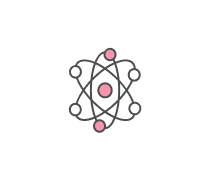All organic compounds contain carbon.
A molecule consisting of one carbon atom and two oxygen
...
The atomic weight is only an average of relative weights of
...
The fact that no
...
A charged particle is generally called an ion.
Glucose is an example of a monosaccharide.
Current information
...
No chemical bonding occurs between the components of a
mixture.
The lower the pH, the higher the hydrogen ion
concentration.
Alpha particles, although relatively weak energy particles,
...
Covalent bonds are generally less stable than ionic bonds.
Hydrogen bonds are
comparatively strong bonds.
A dipeptide can be broken into two amino acids by
...
Human blood has a pH of
________.
Emulsions and colloids are the same thing.
Chemical properties are determined primarily by neutrons.
Lipids are a poor source of stored energy.
Isotopes differ from each other only in the number of
...
A solution that has a pH of 2 could best be described as
...
Select the most correct statement regarding nucleic acids.
CH4 means
________.
An example of a coenzyme is ________.
Amino acids joining together to make a peptide is a good
...
Carbohydrates are stored in
...
A long chain of simple sugars would be a __________.
Salts are always ________.
The four elements that make
...
If an atom were to have two protons, then it would
________.
The formula C6H12O6
means ________.
About 60 to 80% of the
...
A chain of 25 amino acids would be called a ________.
HCO3- is _________.
Atom X has seventeen protons. How many electrons are in its
...
_________ bonds often bind different parts of a molecule
...
Sucrose is a ________.
A chemical reaction in which bonds are broken is usually
...
The coiling of the protein
...
The ATP molecule is not
used in ___________.
The chemical symbol OO means ________.
__________ is a heavy metal
normally found in the body.
Neutral fats have a ________ ratio of fatty acids to
glycerol.
Dipole is ________.
Most fibrous proteins in the body contain all of these except:
A phospholipid is usually ________.
The genetic information is coded in DNA by ________.
Fibrous proteins ________.
In a DNA molecule, the
phosphate serves ________.
Which of the following is necessary for proper conduction
...
Which statement about enzymes is false?
Which of the following is true regarding the concentration
...
In liquid XYZ, you notice that light is scattered as it
...
Which of the following is not true of proteins?
Select the correct statement about isotopes.
The single most abundant
protein in the body is ________.
Many plasma proteins may
function as _________.
Which of the following is not an electrolyte?
Carbohydrates and proteins
...
An atom with a valance of 3
...
The speed or rate of a chemical reaction is influenced by
...
The numbers listed represent the first, second, and third
...
Which of the following would be regarded as an organic
molecule?
Select the statement about mixtures that is correct.
________ is fat-soluble,
...
Two good examples of a colloid would be Jell-O®
or ________.
Select which reactions will usually be irreversible
...
An atom with ________ electrons could be an anion when
...
Which of the following is the major positive ion outside
cells?
________ is not considered to be a factor in influencing a
...
Coenzymes are ________.
In general, the category of lipids that we refer to as oils
...
In redox reactions ________.
If atom X has an atomic number of 74 it would have
________.
________ is a suspension.
Heat shock proteins (hsp) are a type of protein called
________.
















